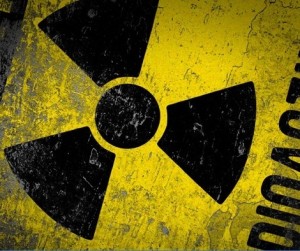Story from The Japan Times
Okutama cesium level seen spiking
By MIZUHO AOKI
Staff writer
An aerial radiation survey of the capital and Kanagawa Prefecture has revealed the northwest tip of Tokyo was tainted by an unusually high amount of fallout, while most other areas showed normal levels, a science ministry official said Friday.
The results, released late Thursday, show that fallout from the Fukushima No. 1 power plant contaminated part of the mountainous Okutama region on Tokyo's western fringe. Radiation readings in the area were the highest of the two prefectures at 100,000 to 300,000 becquerels of radioactive cesium per square meter.
The hourly radiation readings in the area hovered between 0.2 and 0.5 microsievert, but a few spots had higher levels between 0.5 and 1.0 microsieverts, science official Hirotaka Oku said.
Cesium ejected from the Fukushima plant was carried by winds in a southwestern direction through the northern parts of Tochigi and Gunma prefectures before heading south over eastern Gunma and western Saitama to reach Okutama, Oku said.
The geographic features of Okutama, notably its mountains and forests, made the area susceptible to catching radioactive materials, Oku added.
Photo By Kabacchi
Contaminated areas were also spotted in eastern Tokyo, including Katsushika and Edogawa wards, which gave off hourly readings of between 0.2 and 0.5 microsievert per hour.
The highest levels of cesium-134 and -137 found in eastern Tokyo were between 60,000 and 100,000 becquerels per square meter in Katsushika, Oku said.
Cesium-134 has a half-life of two years and cesium-137 a half-life of 30 years.
The aerial monitoring didn't find much contamination in Kanagawa, however. Tainted areas were found only in some spots in the northwestern part, including in the town of Yamakita, with some areas containing between 60,000 to 100,000 becquerels per square meter at the most.
The monitoring was conducted by a helicopter equipped with a special device to detect gamma rays emitted from radioactive isotopes on the ground. Based on the detected amounts, the ministry used a calculation method to determine radiation levels about 1 meter above the ground.
Gamma rays decay as they travel through the atmosphere, and the ministry used that principle to perform its calculations to determine radiation levels near the ground, Oku said.
According to the science ministry, radioactive materials spewed from the stricken plant were carried away by the wind and landed on the ground mostly via rain, contaminating areas far beyond the Tohoku region.
On receiving the results of the ministry's survey, the Tokyo Metropolitan Government started preparations to conduct special food monitoring on produce from the town of Okutama, official Shinji Tomonaga told The Japan Times on Friday.
"Okutama is known for its production of wasabi. So we will conduct tests on wasabi from Okutama next week," Tomonaga said.He said Okutama is the biggest producer of wasabi in Tokyo. In 2009, 23 out of the 26 tons of wasabi production in Tokyo was from Okutama, he said.
Tokyo also plans to conduct tests on "yamame," a kind of trout that Okutama is also famous for, "yuzu" (citron) and mushrooms.
The metropolitan government will conduct sampling tests on other produce from Okutama as well, but the details haven't been decided, Tomonaga said.
As for Katsushika and Edogawa, it has no plans to conduct additional sampling for now because no radioactive cesium was found in its latest sampling tests in late September on "komatsuna" (mustard plant), which is grown in the area, Tomonaga said. The aerial monitoring was conducted from Sept. 14 to 18 as part of an effort also involving prefectures that started in June.










No comments:
Post a Comment